Table of Contents
SCI-FI MOTHS
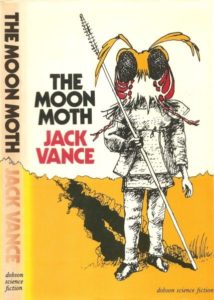
|
Jack Vance’s science-fiction tale The Moon Moth, originally published in 1961, has recently been adapted as a graphic novel by Humayoun Ibrahim (First Second, 2012). The story is set on the planet Sirene, where the inhabitants wear elaborate masks to indicate their social status and communicate by singing, accompanying themselves – depending on the situation – with any one of a dozen musical instruments. Edwer Thissell, human consul to Sirene, is both socially clueless and tone deaf – challenging in a world where etiquette lapses are punishable by death – and has been condemned to wear the low-status Moon Moth mask. The plot is a clever murder mystery, in which Thissell tracks down an assassin. For ages 12 and up. |
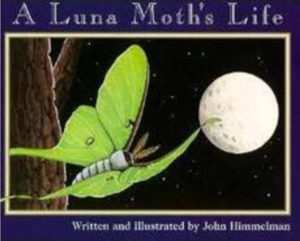 |
Check out real moon moths in John Himmelman’s beautifully illustrated A Luna Moth’s Life (Children’s Press, 1998). A simple text describes the moth’s life cycle for ages 4-7. |

|
In Jean Paton Walsh’s The Green Book (Square Fish, 2012), Pattie and her family have fled the dying Earth to make a new life on a distant planet known as Shine. (In chapter one, they struggle to decide which single book each can take along – a great discussion premise.) Life on Shine, however, proves to be more difficult than expected: farm animals die eating the glassy native grasses and Earth crops refuse to grow. The colonists’ children, however, eventually discover how to live on the new world, and even learn to communicate with the native moth people, who hatch from the boulders – really cocoons – in “Boulder Valley.” For ages 8-12. |
SCIENCE OF MOTHS AND BUTTERFLIES
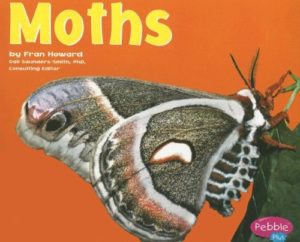
|
Fran Howard’s Moths (Capstone Press, 2006), illustrated with full-page color photographs, is a simple and nicely informational introduction to moths for ages 3-7. |
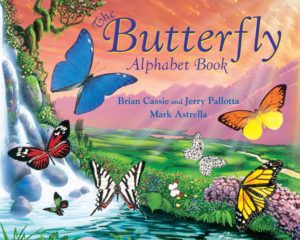
|
Jerry Pallotta’s The Butterfly Alphabet Book (Charlesbridge Publishing, 2016) is an A to Z tour of the varied world of butterfly species, from A (for Apollo) to Z (for Zephyr Metalmark). |
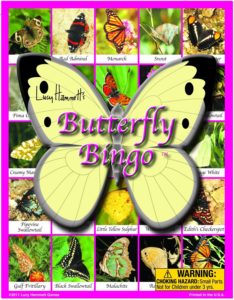 |
Butterfly Bingo (Lucy Hammett Games) is a photo-illustrated butterfly identification game for ages 4 and up. Find the Gulf Fritillary! |
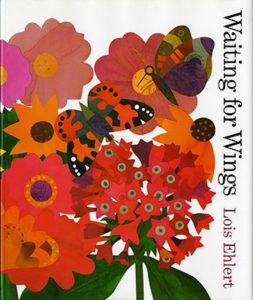
|
Lois Ehlert’s Waiting for Wings (Harcourt, 2001) is a simple rhyming explanation of the butterfly life cycle for ages 3-6, illustrated with exquisite cut-paper pictures; it includes some background information at the end about butterfly anatomy, butterfly and flower identification, and growing a butterfly garden. |
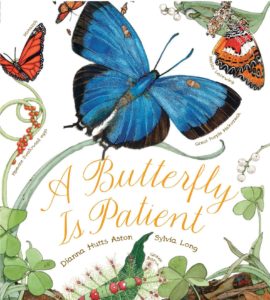 |
Dianna Hutts Aston’s A Butterfly Is Patient (Chronicle Books, 2015) is a celebration of many kinds of butterflies, from the creators of An Egg is Quiet and A Seed is Sleepy. For ages 4-8. |
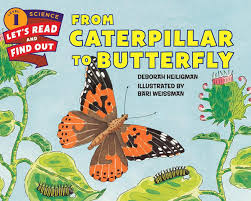 |
Deborah Heiligman’s From Caterpillar to Butterfly (HarperCollins, 2015) in the Let’s-Read-and-Find-Out Science series, covers the life cycle of a Painted Lady butterfly. For ages 4-8. |
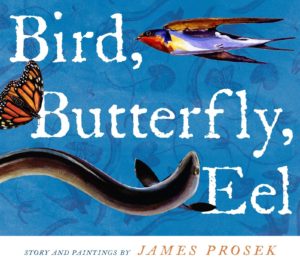 |
James Prosek’s Bird, Butterfly, Eel (Simon & Schuster, 2009) follows the activities of a barn swallow, a Monarch butterfly, and an American eel – who all spend summer on a farm off Cape Cod, but in the fall depart and go their very separate ways. Butterfly sets off on a 3000-mile-long trip to Mexico. For ages 4-8.
Hear it read aloud here. |
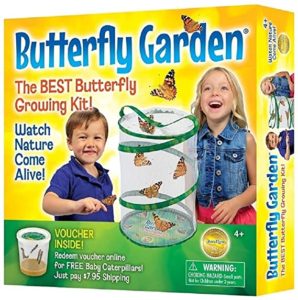
|
With Insect Lore’s Butterfly Garden, kids can watch their (included) caterpillars eat, grow, form chrysalides, and develop into Painted Lady butterflies. The entire process takes about three weeks. A wonderful project for all ages. |
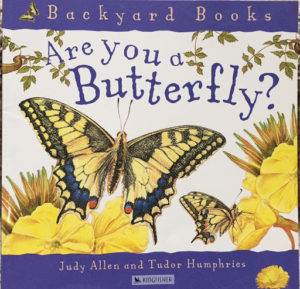
|
In Judy Allen’s Are You a Butterfly? (Kingfisher, 2003), written in talk-directly-to-the-reader second person, kids find out just what it takes to be a developing butterfly. (“Your wings are crumpled. They look terrible. But don’t worry…”)
Other titles in the series include Are You a Ladybug? and Are You a Bee? For ages 4-8. |
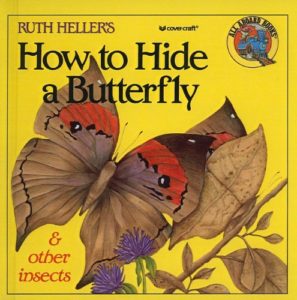
|
Ruth Heller’s How to Hide a Butterfly (Grosset & Dunlap, 1992) is a clever rhyming nature hunt on insect camouflage. (“The butterfly/that you see here/just folds its wings/to disappear.”) For ages 4-8. |
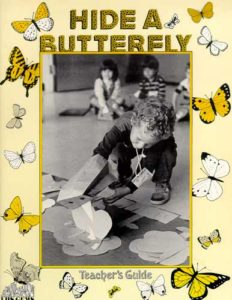 |
From the GEMS (Great Explorations in Math and Science) Series from UC Berkeley’s Lawrence Hall of Science, see Hide a Butterfly in which participants make a mural meadow, populated with paper-cut-out animals, flowers, and butterflies, and then put on a “Butterfly Play,” which teaches kids about natural camouflage. For ages 4-7. |
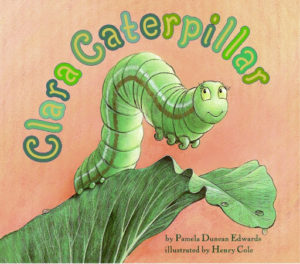
|
In Pamela Duncan Edwards’s Clara Caterpillar (Harpercollins, 2004), Clara begins life as an egg, laid on the leaf of a cabbage plant by a cream-colored butterfly who advises her offspring to grow up to be “courageous and contented.” Clara, a blah-colored caterpillar, grows up to become a plain cream-colored butterfly; the bane of her existence is her flashy friend Catisha, who is crimson and conceited. When a hungry crow moves in, however, clever Clara, safely camouflaged among the camellias, courageously saves her friend’s life. The book is a masterpiece of alliteration; not only will kids learn life lessons from Clara, but they’ll never forget the sound of hard c. For ages 4-8. |
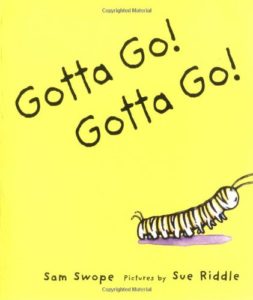
|
The most famous of North American butterflies is probably the black-and-orange Monarch, famed for its phenomenal annual migration in which it travels as much as 3000 miles to spend the winter in Mexico. For ages 4-7, Sam Swope’s Gotta Go! Gotta Go! (Farrar Straus & Giroux, 2000) is the story of one exuberant little Monarch’s journey (“I gotta go! I gotta go! I gotta go to Mexico!”). |
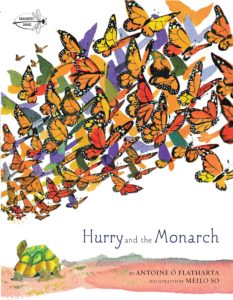
|
In Antoine O Flatharta’s Hurry and the Monarch (Dragonfly, 2009), the story of the annual 2000-mile migration of the Monarch butterflies is told through the friendship of a traveling butterfly and Hurry, a tortoise, who lives in a garden in Wichita Falls, Kansas. For ages 4-8. |
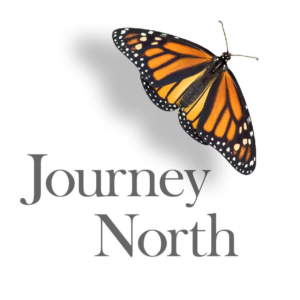
|
Track the butterflies! Journey North is a citizen science project in which participants track migrations and seasonal events – many, among them Monarch butterflies. |
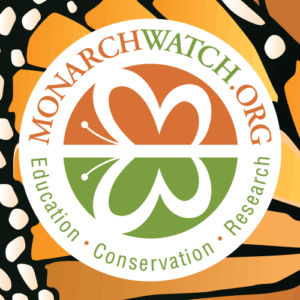
|
Monarch Watch is a citizen science program in which participants learn about Monarch butterflies, tag and track Monarchs, create Monarch waystations and butterfly gardens, collect and donate milkweed seeds, and more. |
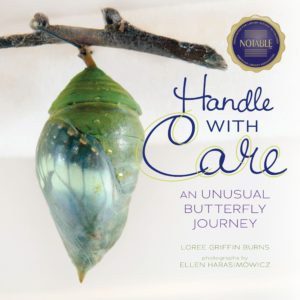
|
Loree Griffin Burns’s Handle with Care (Millbrook, 2014) is the story of a Blue Morpho butterfly farm in Costa Rico, illustrated with great color photos. For ages 4-9. |
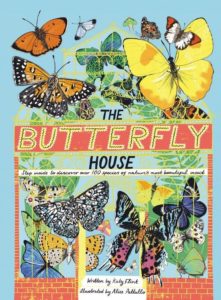
|
Katy Flint’s The Butterfly House (Frances Lincoln Books, 2019), gorgeously illustrated by Alice Pattullo, has beautifully presented information on a wide range of butterfly and moth families for ages 6-10. |
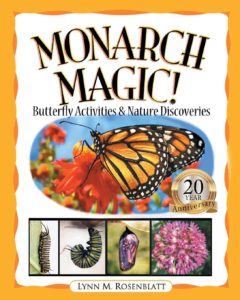
|
Lynn Rosenblatt’s Monarch Magic! (MindStir Media, 2018) is a terrific collection of butterfly activities, projects, and nature discoveries for ages 8-12, illustrated with drawings and photographs. |
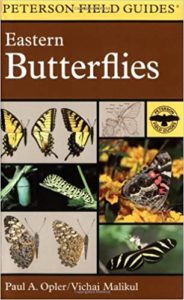 |
Which moth? And which butterfly? Peterson First Guides are simplified and condensed versions of the renowned Peterson Field Guides, targeted at beginning naturalists. Paul A. Opier’s color-illustrated Peterson First Guide to Butterflies and Moths (Houghton Mifflin Harcourt, 1998) covers 182 different species in 128 pages. |
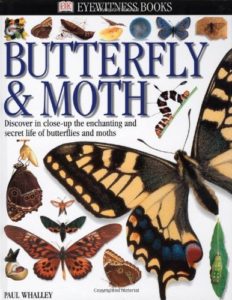
|
In Butterfly & Moth (DK Publishing, 2012) in the DK Eyewitness series, each double-page spread is devoted to a different topic, such as “Butterfly or moth?,” “Caterpillars,” “Silk moths,” “Migration and hibernation,” and “Camouflage.” Like all the volumes in the series, it’s beautifully designed, with captioned color photographs, drawings, diagrams, and fact boxes. Officially for ages 8 and up, but the great pictures will also appeal to younger kids. |
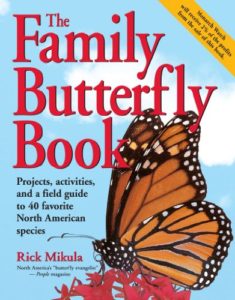
|
Rick Mikula’s The Family Butterfly Book (Storey, 2000) is a 160+-page compendium of fascinating butterfly information (did you know that the best place to find butterfly fossils is Pike’s Peak, Colorado?), illustrated with gorgeous color photographs and paintings. The author covers the anatomy and behavior of caterpillars and butterflies and then goes on to show young enthusiasts how to attract, identify, and raise them. Included, for example, are detailed illustrated instructions for planting a butterfly garden, making a butterfly net, building a caterpillar-rearing container and a hanging butterfly cage, feeding butterflies, photographing butterflies, and much more. |
| All About Butterflies from Enchanted Learning is an illustrated hypertext book for kids of all ages. There are detailed pages on butterfly biology, behavior, classification, and life cycles, many printable worksheets, coloring and puzzle pages, instructions for planting a butterfly garden and raising caterpillars, an illustrated butterfly dictionary, activities and crafts, and information sheets on individual butterflies. For elementary-level kids. | |
| What’s the difference between a butterfly and a moth? Find out at Everyday Mysteries, which also features photographs, fascinating facts, and a reference list. | |
| The Butterfly Website has a wealth of information on butterflies, butterfly gardening (with a helpful plant list), butterfly science, and a photo gallery, plus crafts (many), printable coloring pages, and lesson plans. | |
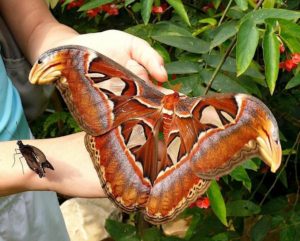 |
Check out the fabulous South Asian Attacus atlas moth, the world’s biggest, a gaudy beauty with a wingspan of up to twelve inches. |
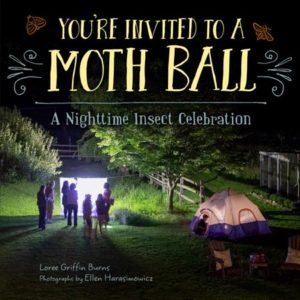 |
Loree Burns’s You’re Invited to a Moth Ball (Charlesbridge, 2020) is all about creating a lat-night party to lure moths, illustrated with great color photographs. Try it! For kids ages 5-8, but a great project for all ages. |
| Go mothing! From Science Friday, find out how to attract and study moths, along with some suggested experiments. |
